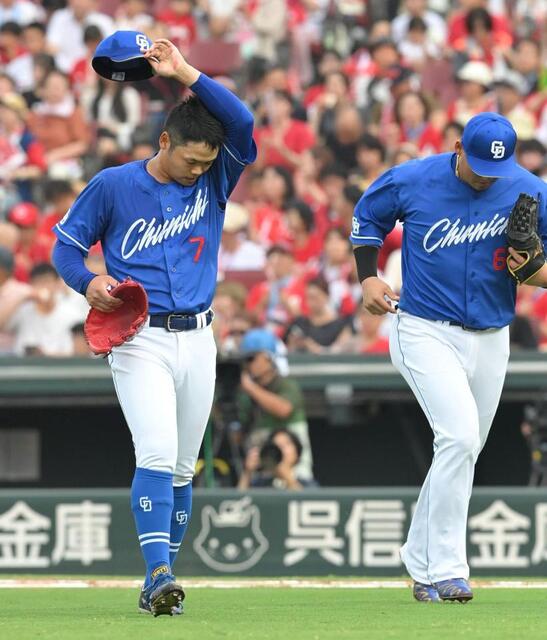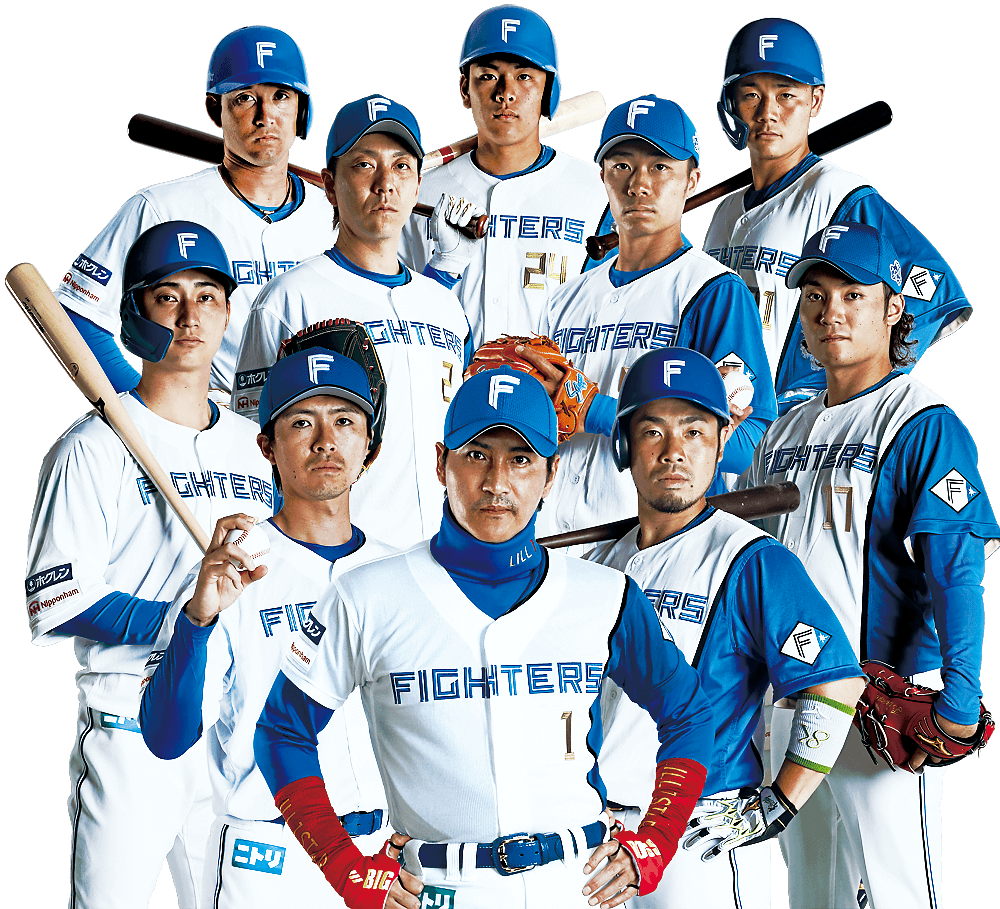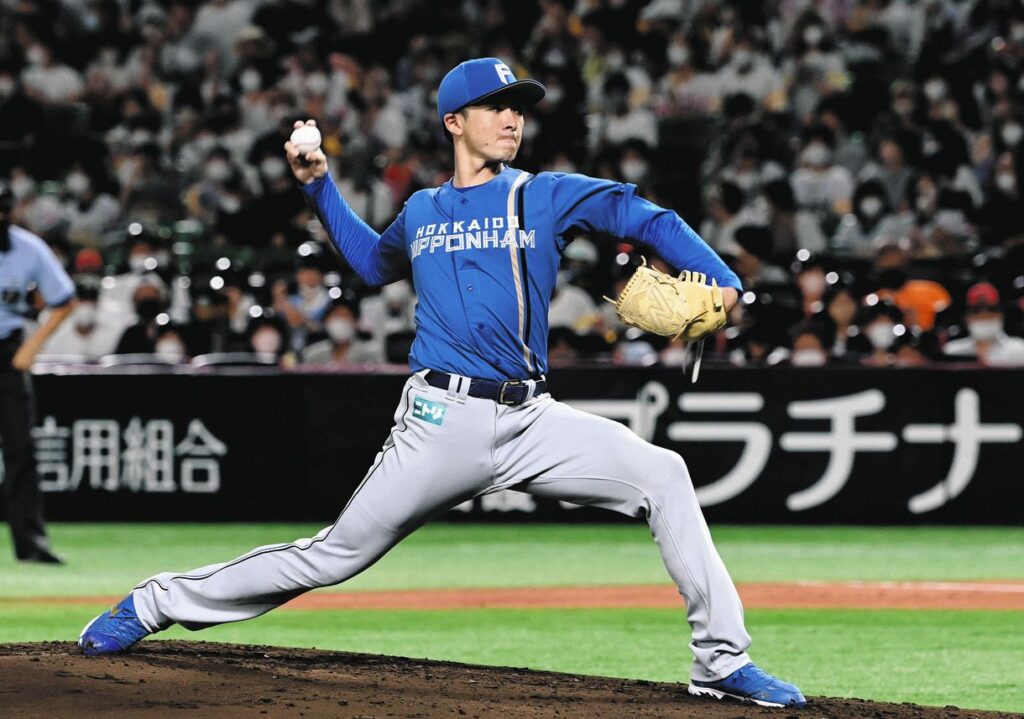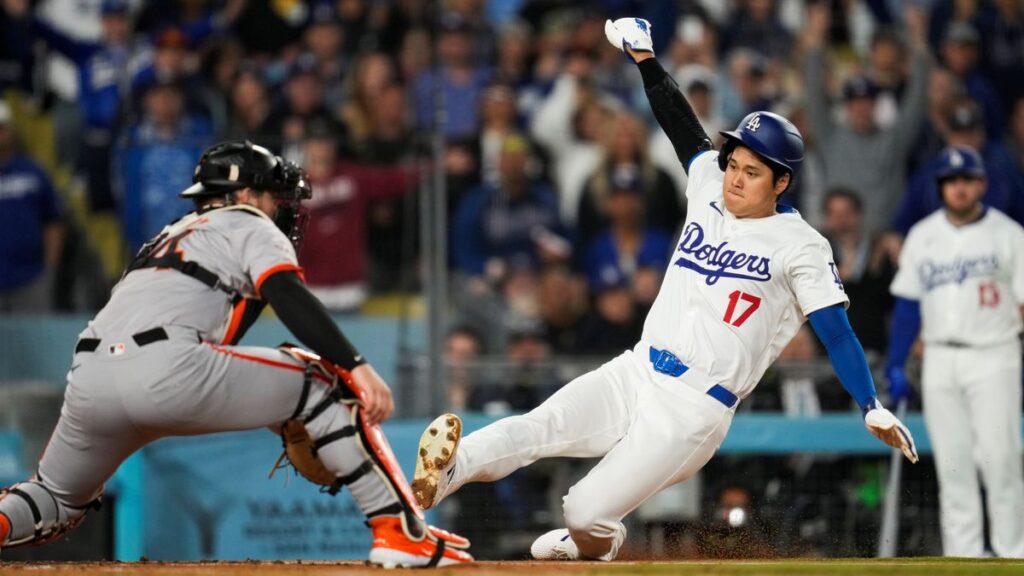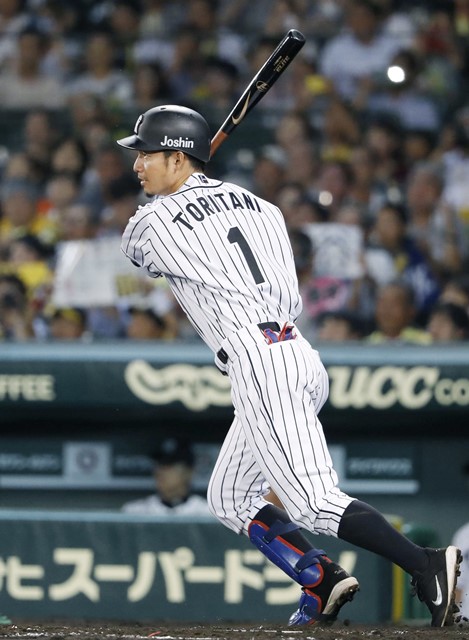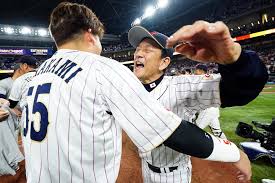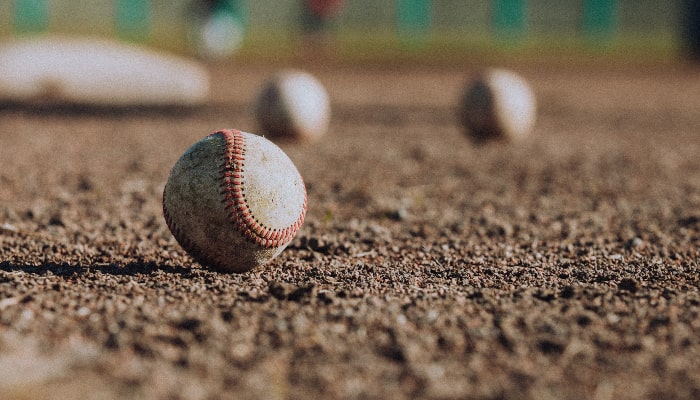
Japanese professional baseball is divided into two leagues, the Central League and the Pacific League, each with six teams.
These teams have passionate fans all over Japan and engage in fierce battles every year.
In this article, we will provide a detailed list of the names of all 12 professional baseball teams (all teams) and their details.
We will introduce the history of each team, notable players, home stadiums, and more, and fully convey the charm of professional baseball.
First, let’s look at the names and details of the six teams in the Central League.
目次
List of Central League teams
The Central League is home to Japan’s six leading professional baseball teams.
Each of these teams has its own unique history and characteristics, and is supported by many fans.
Below we will explain in detail the names and characteristics of the six teams in the Central League.
Yomiuri Giants
The Yomiuri Giants are a Tokyo-based baseball team and one of the oldest in Japanese professional baseball.
Founded in 1934, the club has played a central role in Japanese professional baseball since its early days.
Based at Tokyo Dome, the team is known for its overwhelming financial strength and powerful roster of players.
The Giants have won numerous league championships and the Japan Series, and are highly regarded both in Japan and abroad.
The club has produced legendary players such as Shigeo Nagashima and Sadaharu Oh, and currently has many star players on its roster.
Giants games are special events for many fans and the stadium is always filled with excitement.
Hanshin Tigers
The Hanshin Tigers are a baseball team whose home stadium is Hanshin Koshien Stadium in Nishinomiya, Hyogo Prefecture.
Founded in 1935, the Tigers have a passionate fan base centered in the Kansai region and are known for their passionate support, even among the Central League teams.
The Tigers have won many league championships and Japan Series titles, and their Japan Series championship in 1985 is an unforgettable moment for fans.
Tigers fans place great importance on games at Koshien Stadium, and their enthusiastic style of cheering is unparalleled.
Chunichi Dragons
The Chunichi Dragons are a baseball team based in Nagoya, Aichi Prefecture, and were founded in 1936.
Based at Nagoya Dome, the team is known for its solid team building and strong pitching staff.
The Dragons have won the league championship and the Japan Series many times, and were a particularly powerful team in the 2010s, dominating other teams.
Fans love the team’s solid playing style and enthusiastic support at home games.
Yokohama DeNA Baystars
The Yokohama DeNA BayStars is a baseball team based in Yokohama, Kanagawa Prefecture, and was founded in 1949.
The team’s home ground is Yokohama Stadium, and in recent years has been attracting attention for the success of its young players.
The Baystars won the Japan Series in 1998 and have since put on many exciting games.
Fans enjoy playing at Yokohama Stadium and support the team’s upbeat, attacking style of play.
Hiroshima Toyo Carp
The Hiroshima Toyo Carp is a baseball team based in Hiroshima City, Hiroshima Prefecture, and was founded in 1949.
The team’s home field is Mazda Stadium and it is known as a community-based team.
The Carp have won the league championship and the Japan Series numerous times, and their devoted fans are famous nationwide as “Carp Girls.”
The Carp’s greatest appeal lies in their team management that is rooted in the local community and their strong bond with their fans.
Tokyo Yakult Swallows
The Tokyo Yakult Swallows is a baseball team based in Shinjuku, Tokyo, and was founded in 1950.
Their home stadium is Meiji Jingu Baseball Stadium and they are a beloved presence in the heart of Tokyo.
The Swallows have won numerous league championships and the Japan Series, and are known for their powerful batting lineup, especially from the 1990s through the early 2000s.
Swallows fans enjoy games at Jingu Stadium and root for the team’s aggressive style of play.
Each team in the Central League has its own unique charm and history and is loved by fans.
Next, let’s take a look at the Pacific League teams.

List of Pacific League teams
The Pacific League is home to six teams, each with their own unique style and appeal.
These teams have passionate fans all over the country and engage in fierce competition.
Below we will explain in detail the names and characteristics of the six Pacific League teams.
Fukuoka SoftBank Hawks
The Fukuoka SoftBank Hawks are a baseball team based in Fukuoka City, Fukuoka Prefecture, and were founded in 1938.
The team’s home stadium is the Fukuoka PayPay Dome, and in recent years it has become known as one of the strongest teams in the Pacific League.
The Hawks have won numerous league championships and the Japan Series, and their consecutive Japan Series titles since the late 2010s are particularly fresh in the memory.
The team is characterized by its overwhelming batting power and strong pitching staff, and Fukuoka fans are enthusiastic about supporting the Hawks.
Hokkaido Nippon-Ham Fighters
The Hokkaido Nippon-Ham Fighters are a baseball team based in Sapporo, Hokkaido, and was founded in 1946.
The team’s home base is Sapporo Dome and they are loved throughout Hokkaido as a community-based team.
The Fighters are known for developing young players and unique strategies, and have achieved numerous league championships and a Japan Series victory.
In particular, their victory in the 2006 national championship was a major talking point, as it was the first such achievement since the school moved to Hokkaido.
Hokkaido fans are enthusiastic about supporting the young players who represent the team’s future.
Tohoku Rakuten Golden Eagles
The Tohoku Rakuten Golden Eagles is a baseball team based in Sendai, Miyagi Prefecture, and was founded in 2004.
Based at Rakuten Seimei Park Miyagi, the team is a newcomer but has grown rapidly.
The Golden Eagles won their first Japan Series in 2013 and have continued to enjoy consistent strength ever since.
In particular, pitcher Masahiro Tanaka’s performance was an important moment in the team’s history. Tohoku fans are warmly supporting the team as it grows together with the region.
Saitama Seibu Lions
The Saitama Seibu Lions is a baseball team based in Tokorozawa City, Saitama Prefecture, and was founded in 1950.
The team plays at the Belluna Dome and is loved by many fans as a traditionally strong team.
The Lions have won numerous league championships and the Japan Series, and their golden age from the 1980s to the 1990s is particularly unforgettable for many fans.
The team is characterised by a strong batting line-up and fast players, and fans look forward to seeing their offensive power.
Orix Buffaloes
The Orix Buffaloes is a baseball team based in Osaka City, Osaka Prefecture, and was founded in 1936.
The team is based at Kyocera Dome Osaka and is supported by many fans in the Kinki region.
The Buffaloes have won numerous league championships, and their victory in the Japan Series in 1996 was a major talking point.
The team is known for its solid defense and balanced offense, and its passionate fans.
Chiba Lotte Marines
The Chiba Lotte Marines is a baseball team based in Chiba City, Chiba Prefecture, and was founded in 1950.
The team is based at ZOZO Marine Stadium and is loved throughout Chiba Prefecture.
The Marines have won the league championship and the Japan Series many times, with their victories in 2005 and 2010 being particularly memorable.
Fans are active in the stadium and support their team with their passionate cheering style.
Like their Central League counterparts, each team in the Pacific League has its own unique charm and history, and is loved by many fans.
Next, we’ll take a closer look at the history and profile of each team.
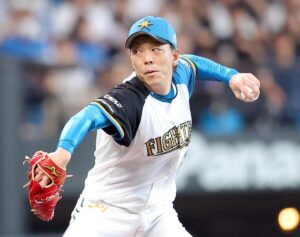
History and overview of each team
Each team in Japanese professional baseball has its own unique history and characteristics.
By looking back at the history of the Central League and Pacific League teams, you can gain a deeper understanding of the appeal of professional baseball.
Here we will provide a detailed explanation of the history and overview of each team.
History of Central League teams
The Central League is home to many traditional teams with long histories.
Each team has passionate fans in their respective regions and has played out many memorable matches.
-
Yomiuri Giants :
- Founded in 1934, the Yomiuri Giants are known as pioneers in Japanese professional baseball. From before the war to the postwar period, they produced numerous star players and achieved many league victories and Japan Series victories.
- In particular, the achievements of two great stars, Shigeo Nagashima and Sadaharu Oh, are symbolic in the history of Japanese professional baseball. The Giants still lead the league today with their powerful player pool and financial strength.
-
Hanshin Tigers :
- Founded in 1935, the Hanshin Tigers are a baseball team representing the Kansai region. The Tigers, whose home stadium is Koshien Stadium, have a passionate fan base and have won the league championship and the Japan Series.
- The 1985 Japan Series victory is a special year for Tigers fans, and the three consecutive home runs by Bass, Kakebu, and Okada into the back screen have become legendary.
-
Chunichi Dragons :
- Founded in 1936, the Chunichi Dragons are a baseball team based in Nagoya. The Dragons boast solid defense and a strong pitching staff, and have won numerous league championships and the Japan Series.
- In particular, the fierce battles under manager Senichi Hoshino and the golden age under manager Hiromitsu Ochiai are unforgettable for fans.
-
Yokohama DeNA BayStars :
- Founded in 1949, the Yokohama DeNA BayStars are a baseball team based in Yokohama. Their victory in the 1998 Japan Series was the ultimate joy for BayStars fans.
- In recent years, the team’s young players have been performing well and captivating fans with their aggressive playing style.
-
Hiroshima Toyo Carp :
- Founded in 1949, the Hiroshima Toyo Carp is a community-based baseball team based in Hiroshima. The Carp is loved by many fans for its golden age from the 1970s to the 1980s, and for its consecutive league championships in recent years.
- In particular, the strong bond with their local Hiroshima fans is a major attraction for the Carp.
-
Tokyo Yakult Swallows :
- Founded in 1950, the Tokyo Yakult Swallows are a baseball team based in Shinjuku, Tokyo. The Swallows were known for their powerful batting lineup from the 1990s to the early 2000s, and won many league championships and the Japan Series.
- In particular, the period centered around catcher Atsuya Furuta is remembered as a golden age for Swallows fans.
Pacific League Team History
The Pacific League is home to many teams with innovative strategies and unique styles.
Each team is supported by enthusiastic fans in their respective regions and has put on many memorable matches.
-
Fukuoka SoftBank Hawks :
- The Fukuoka SoftBank Hawks are a baseball team based in Fukuoka, founded in 1938. With their powerful batting and pitching staff, especially since the 2000s, the team has won many league championships and the Japan Series.
- The SoftBank Hawks have been a source of great excitement, especially since the time of manager Koji Akiyama, as they have consistently won the Japan Series, and are a source of pride for Fukuoka fans.
-
Hokkaido Nippon-Ham Fighters :
- Founded in 1946, the Hokkaido Nippon-Ham Fighters are a baseball team based in Sapporo, Hokkaido. The Fighters are known for developing young players and innovative strategies, especially for winning the Japan Series in 2006.
- The team’s success since moving to Hokkaido is due to its community-based management and enthusiastic support from its fans.
-
Tohoku Rakuten Golden Eagles :
- The Tohoku Rakuten Golden Eagles are a new baseball team based in Sendai, Miyagi Prefecture, founded in 2004. Their first Japan Series victory in 2013 brought great joy to the Tohoku region.
- This is a team that has seen remarkable growth in its young players, including pitcher Masahiro Tanaka.
-
Saitama Seibu Lions :
- Founded in 1950, the Saitama Seibu Lions is a traditionally powerful baseball team based in Tokorozawa City, Saitama Prefecture. During their golden age from the 1980s to the 1990s, they achieved many league victories and the Japan Series.
- The Lions’ strong batting lineup and speedy players are an attraction for fans.
-
Orix Buffaloes :
- The Orix Buffaloes are a baseball team based in Osaka, founded in 1936. They won the Japan Series in 1996 and are known for their strong pitching staff and well-balanced team structure in recent years.
- The team is passionately supported by fans in the Kinki region and has strong ties with the local community.
-
Chiba Lotte Marines :
- Founded in 1950, the Chiba Lotte Marines are a baseball team based in Chiba City, Chiba Prefecture. Their victories in the Japan Series in 2005 and 2010 were a source of great joy for fans.
- The Marines’ passionate style of support and community-based management are loved by fans.
By learning about the history and overview of each team, you can appreciate the depth and appeal of Japanese professional baseball.
Next, let’s take a closer look at the team’s home base and stadium.
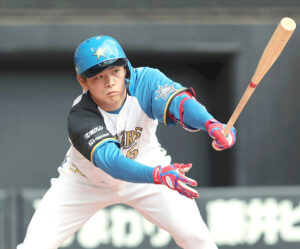
Team home grounds and stadiums
Each Japanese professional baseball team has its own home base and stadium that is closely tied to the local community and is loved by its fans.
The stadium not only hosts matches but also serves as a symbol of the region.
Here we will provide detailed information about the home bases and stadiums of the Central League and Pacific League teams.
Central League home stadium
The Central League is home to a number of unique stadiums.
Each team’s home stadium is a local landmark and beloved by many fans.
-
Yomiuri Giants – Tokyo Dome:
- The home stadium of the Yomiuri Giants is Tokyo Dome in Bunkyo Ward, Tokyo. Opened in 1988, this stadium is famous as Japan’s first domed baseball stadium and is used for multiple purposes, including concerts and events, in addition to baseball games.
- Tokyo Dome boasts a capacity of over 55,000 people, and Giants home games are always crowded with spectators. As it is a dome stadium, you can watch the game in a comfortable environment regardless of the weather.
-
Hanshin Tigers – Hanshin Koshien Stadium:
- The home stadium of the Hanshin Tigers is Hanshin Koshien Stadium in Nishinomiya, Hyogo Prefecture. Opened in 1924, this stadium is one of the oldest in Japan and is used for the spring and summer high school baseball tournaments.
- Koshien Stadium has a capacity of about 47,000 people, and is known for the enthusiastic support of Tigers fans, especially their famous cheering style of releasing jet balloons.
-
Chunichi Dragons – Vantelin Dome Nagoya (Nagoya Dome):
- The home stadium of the Chunichi Dragons is the Vantelin Dome Nagoya (Nagoya Dome) in Nagoya City, Aichi Prefecture. It opened in 1997 and is used for a variety of purposes, including not only baseball games but also concerts and exhibitions.
- Nagoya Dome has a capacity of about 40,000 people and provides a comfortable viewing environment. Home games are big events for Dragons fans.
-
Yokohama DeNA BayStars – Yokohama Stadium:
- The home stadium of the Yokohama DeNA BayStars is Yokohama Stadium in Yokohama, Kanagawa Prefecture. Opened in 1978, this stadium is an urban baseball stadium located in the center of the city.
- Yokohama Stadium has a capacity of about 30,000 people and is characterized by the close distance between fans and players. For BayStars fans, Yokohama Stadium is the heart of the home stadium.
-
Hiroshima Toyo Carp – Mazda Stadium:
- The home stadium of the Hiroshima Toyo Carp is Mazda Zoom-Zoom Stadium Hiroshima (Mazda Stadium) in Hiroshima City, Hiroshima Prefecture. Opened in 2009, this stadium is equipped with the latest facilities.
- Mazda Stadium has a capacity of approximately 33,000 people, and the seats are close to the field, allowing you to enjoy a immersive viewing experience. For Carp fans, Mazda Stadium is a symbol of pride.
-
Tokyo Yakult Swallows – Meiji Jingu Baseball Stadium:
- The home stadium of the Tokyo Yakult Swallows is Meiji Jingu Baseball Stadium in Shinjuku, Tokyo. Opened in 1926, this stadium is one of the oldest in Japanese professional baseball.
- Jingu Stadium has a capacity of about 35,000 people and is located in the center of Tokyo, so it is very accessible. For Swallows fans, cheering at Jingu Stadium is a special experience.
Pacific League home stadium
Each team in the Pacific League has its own unique home base and stadium, and is loved by fans.
-
Fukuoka SoftBank Hawks – Fukuoka PayPay Dome:
- The home stadium of the Fukuoka SoftBank Hawks is the Fukuoka PayPay Dome in Fukuoka City, Fukuoka Prefecture. Opened in 1993, it is Japan’s first dome stadium with a retractable roof.
- The Fukuoka PayPay Dome has a capacity of about 40,000 people, so you can watch the game comfortably regardless of the weather. For Hawks fans, the Fukuoka PayPay Dome is a sacred place.
-
Hokkaido Nippon-Ham Fighters – Sapporo Dome:
- The home stadium of the Hokkaido Nippon-Ham Fighters is the Sapporo Dome in Sapporo, Hokkaido. Opened in 2001, it is a multi-purpose stadium that can accommodate both baseball and soccer.
- Sapporo Dome has a capacity of approximately 41,000 people and is an important match venue for Fighters fans. The comfortable environment inside the dome allows for enthusiastic support.
-
Tohoku Rakuten Golden Eagles – Rakuten Seimei Park Miyagi:
- The home stadium of the Tohoku Rakuten Golden Eagles is Rakuten Seimei Park Miyagi in Sendai, Miyagi Prefecture. It opened in 2005 and has been attracting attention as the home base of an emerging baseball team.
- Rakuten Seimei Park Miyagi has a capacity of about 30,000 people and is loved by fans in the Tohoku region as a community-based stadium. Home games are a big source of excitement for Eagles fans.
-
Saitama Seibu Lions – Belluna Dome:
- The home stadium of the Saitama Seibu Lions is the Belluna Dome in Tokorozawa, Saitama Prefecture. It opened in 1979 and is known as Japan’s first domed stadium.
- The Belluna Dome has a capacity of about 35,000 people and is a special place for Lions fans. As it is a domed stadium, you can watch the game comfortably regardless of the weather.
-
Orix Buffaloes – Kyocera Dome Osaka:
- The home stadium of the Orix Buffaloes is the Kyocera Dome Osaka in Osaka City, Osaka Prefecture. It opened in 1997 and is a dome stadium equipped with modern facilities.
- Kyocera Dome Osaka has a capacity of approximately 36,000 people and is an important venue for Buffaloes fans to watch games. It is a comfortable viewing environment where fans can unfold their passionate support.
-
Chiba Lotte Marines – ZOZO Marine Stadium:
- The home stadium of the Chiba Lotte Marines is ZOZO Marine Stadium in Chiba City, Chiba Prefecture. It opened in 1990 and is characterized by its location close to the sea and being subject to wind.
- ZOZO Marine Stadium has a capacity of approximately 30,000 people and is an important place for Marines fans. The ocean view from the stadium provides a special viewing experience.
These stadiums are symbols of their communities and special places for their fans.
Next, let’s take a closer look at the notable players and managers of each team.

Notable players and managers from each team
The appeal of professional baseball is supported by many famous players and excellent managers.
Each team has its own notable players who carry the expectations of the fans on their shoulders, and famous managers who lead their teams to victory.
Here we will take a closer look at notable players and managers from the Central League and Pacific League.
Notable players and managers in the Central League
The Central League is home to many star players and famous coaches.
Their efforts have contributed greatly to the team’s victory.
-
Yomiuri Giants :
- Player to watch: Hayato Sakamoto – Captain of the Giants and a commanding presence at shortstop, Hayato Sakamoto impresses fans with his outstanding play on both offense and defense. His hitting and defensive prowess make him an indispensable central presence on the team.
- Manager: Tatsunori Hara – Known as the legendary manager of the Giants, Tatsunori Hara has led the team to numerous league championships and the Japan Series. He is known for his strategic leadership and player development, and has always led his team to the top.
-
Hanshin Tigers :
- Player to watch: Teruaki Sato – The Rookie of the Year, Teruaki Sato, brings momentum to his team with his powerful batting. Keep an eye on his development as he is expected to be a main hitter of the future.
- Manager: Yohei Yano – Manager Yohei Yano places great importance on communication with his players and is dedicated to developing young players. He is highly regarded for his strategic leadership and team building for the Tigers.
-
Chunichi Dragons :
- Player to watch: Yohei Oshima – The leadoff hitter for the Chunichi Dragons, Yohei Oshima is the core of the team’s offense with his speed and high batting average. His presence is a major boost to the Dragons’ strength.
- Manager: Tsuyoshi Yoda – Manager Tsuyoshi Yoda is a former pitcher and is known for his management of pitchers. His solid leadership keeps the team stable.
-
Yokohama DeNA BayStars :
- Player to watch: Keita Sano – Captain of the Baystars, Keita Sano is a hitter with both power and technique, and his hitting is what helps the team score runs.
- Manager: Daisuke Miura – Former ace pitcher Daisuke Miura is the manager who brings the team together by making the most of each player’s individuality. He also puts effort into developing young players.
-
Hiroshima Toyo Carp :
- Player to watch: Seiya Suzuki – Seiya Suzuki is the main hitter for the Hiroshima Carp, and his strong hitting and consistent batting average have him under the spotlight in the major leagues.
- Manager: Shinji Sasaoka – As a former pitcher, Shinji Sasaoka is focused on strengthening the pitching staff and team unity, and encouraging the development of the Carp’s young players.
-
Tokyo Yakult Swallows :
- Player to watch: Munetaka Murakami – A young Swallows slugger, Munetaka Murakami has been a standout player with his powerful batting and many home runs. He has a bright future ahead of him.
- Manager: Shingo Takatsu – Manager Shingo Takatsu is a former closer who excels at managing pitchers and directing the team in the final stages of games. He is highly regarded for leading the Swallows to their first Japan Series championship.
Pacific League notable players and managers
The Pacific League also has many star players and great managers.
Their play and management make the league even more appealing.
-
Fukuoka SoftBank Hawks :
- Player to watch: Yuki Yanagida – The Hawks’ main batter, Yuki Yanagida, is a powerful bat and a fast runner who helps boost the team’s scoring. He is beloved by many fans as one of Japan’s leading sluggers.
- Manager: Hiroshi Fujimoto – Manager Hiroshi Fujimoto values building trust with his players and strengthening team unity. He has led the Hawks to a perennial winning streak with his precise command and strategy.
-
Hokkaido Nippon-Ham Fighters :
- Player to watch: Kondo Kensuke – Kondo Kensuke is a key hitter for the Fighters, leading the team’s offense with his high batting average and on-base percentage. He is known for his consistent hitting.
- Manager: Tsuyoshi Shinjo – Manager Tsuyoshi Shinjo brings his charisma from his playing days and unique tactics to lead the team. He is attracting attention as a manager with a new style.
-
Tohoku Rakuten Golden Eagles :
- Player to watch: Hideto Asamura – Hideto Asamura is the Golden Eagles’ main batter and has hit many home runs with his batting ability. He is an essential source of points for the team.
- Manager: Kazuhisa Ishii – Manager Kazuhisa Ishii is using his experience as a player to focus on team strategy and player development. He is expected to lead Rakuten into a new era.
-
Saitama Seibu Lions :
- Player to watch: Tomoya Mori – The Lions’ starting catcher and a known power hitter, Tomoya Mori is a force to be reckoned with on the team, and is also highly regarded for his defense.
- Manager: Kazuo Matsui – Manager Kazuo Matsui leads the team with his wealth of experience and calm judgment. He uses his achievements as a player to encourage the development of young players.
-
Orix Buffaloes :
- Player to watch: Masahiro Yoshida – The Buffaloes’ main batter, Masahiro Yoshida, has hit many home runs with his powerful batting and contributed to the team’s victories. He is expected to be the key player in the offense.
- Manager: Satoshi Nakajima – Manager Satoshi Nakajima brings the team together with meticulous strategy and emphasis on communication with the players. He is highly regarded for leading the Buffaloes to victory in the league.
-
Chiba Lotte Marines :
- Player to watch: Haruya Inoue – Haruya Inoue is a key hitter for the Marines, and his powerful hitting has led to many runs. He is a fan favorite.
- Manager: Suguru Iguchi – Manager Suguru Iguchi is focused on team strategy and player development, utilizing his experience as a player, and is expected to lead the Marines back to the top.
The presence of these notable players and managers makes professional baseball games even more fascinating.
Next, let’s take a closer look at each team’s fans and cheering culture.
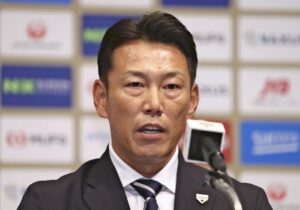
Fans and cheering culture of each team
Japanese professional baseball is supported by passionate fans and a unique cheering culture.
Each team has its own different cheering style and fan culture, which makes watching the game even more enjoyable.
Here we will take a closer look at the fans and cheering culture of each team in the Central League and Pacific League.
Central League Fan Culture
The Central League has a strong roots in a culture of traditional and passionate cheering.
Fans of each team support their team in their own unique way.
-
Yomiuri Giants :
- Giants fans have a wide fan base that spreads all over Japan. Their cheering at Tokyo Dome is powerful and unified, and is especially notable for using megaphones.
- A wide variety of cheering songs and theme songs add to the excitement of the match. The entire stands are filled with joy, especially at the moment of victory.
-
Hanshin Tigers :
- Tigers fans are known for their enthusiastic support, and their cheering at Koshien Stadium is spectacular. In particular, their traditional cheering style of releasing jet balloons is famous, and the stands are dyed yellow and black.
- There is a strong sense of solidarity between fans, and the sight of the entire stand coming together to follow the lead of the cheering squad is something unlike anything else.
-
Chunichi Dragons :
- Dragons fans are known for their solid and warm support. At Nagoya Dome, cheering is dominated by united cheering using handclaps and megaphones.
- In particular, there is a strong sense of pride in the hometown, and a style of cheering that is closely tied to the local community is deeply rooted in the area. The distance between fans and players is close, and their warm support gives strength to the players.
-
Yokohama DeNA BayStars :
- Baystars fans are known for their youthful and energetic cheering. At Yokohama Stadium, the stands are filled with colorful goods and cheering using megaphones.
- The cheer squad leads a variety of cheer songs and chance themes, livening up the atmosphere during the game. The cheers when a home run is hit are particularly loud.
-
Hiroshima Toyo Carp :
- Carp fans are known for their enthusiastic support and strong community ties. At Mazda Stadium, fans dressed in red uniforms come together to cheer, turning the entire stand red.
- There are many female fans, known as “Carp Girls,” and the team is supported by a wide range of generations. There are many cheering songs and chance themes, and you can enjoy a sense of unity throughout the game.
-
Tokyo Yakult Swallows :
- Swallows fans have a distinctive way of cheering at Jingu Stadium. In particular, their cheering style of “Tokyo Ondo” using umbrellas is famous, and the stands are filled with colorful umbrellas even on rainy days.
- Fans are very friendly and can enjoy the game in a homely atmosphere. The unity of the cheering squad is what makes it so appealing.
Pacific League Fan Culture
Each team in the Pacific League also has its own unique and passionate fan culture.
Cheering styles are diverse and vary from region to region.
-
Fukuoka SoftBank Hawks :
- Hawks fans are known for their enthusiastic support at the Fukuoka PayPay Dome, where yellow and black uniformed fans liven up the stands with cheers and megaphone chants.
- In particular, cheering songs such as “Burn Dragons” reverberate throughout the stadium, creating a sense of unity. The victory ceremony after the game is also something fans look forward to.
-
Hokkaido Nippon-Ham Fighters :
- The Fighters fans’ cheering at Sapporo Dome is distinctive. The united cheering led by the “Kamasta Cheering Squad” is particularly appealing.
- The team is known for its strong support for the development of young players, and for the close relationship between fans and players. There are many cheering songs and chance themes, so you can enjoy the excitement during the game.
-
Tohoku Rakuten Golden Eagles :
- Eagles fans are known for their enthusiastic support at Rakuten Seimei Park Miyagi, where the entire stadium comes together to cheer on the players with powerful voices.
- The support style is rooted in the community, and you can see the local Tohoku fans united in their support. There are also a wide variety of cheer songs and chance themes.
-
Saitama Seibu Lions :
- Lions fans are known for their cheering at the Belluna Dome. Fans dressed in blue and white uniforms liven up the stands with cheers and megaphones.
- In particular, cheering songs such as “Roar Lions” resound throughout the game, creating a sense of unity. The victory ceremony after the game is also something fans look forward to.
-
Orix Buffaloes :
- Buffaloes fans have a distinctive way of cheering at Kyocera Dome Osaka. The united cheering led by the “Buffaloes cheering squad” is particularly appealing.
- There are many cheering songs and chance themes, so you can enjoy the excitement during the game. Fans also have a lot of interaction with each other, so you can enjoy the game in a homely atmosphere.
-
Chiba Lotte Marines :
- Marines fans are known for their enthusiastic cheering at ZOZO Marine Stadium. The unified cheering led by the “Marines Supporters” is particularly appealing.
- There are many cheering songs and chance themes, so you can enjoy the excitement during the game. Fans are very friendly and interact with each other, so you can enjoy the game in a homely atmosphere.
These fans and the cheering culture make professional baseball even more appealing.
Next, let’s take a closer look at the future prospects of each of the 12 professional baseball teams.

Future outlook for the 12 professional baseball teams
The future of professional baseball depends on the development of young players and the challenges each team faces.
In order for professional baseball to continue to develop and grow into an attractive sport, it is important for young players to grow and overcome challenges.
Here we will take a detailed look at the development and future of young players, as well as the future challenges and prospects of each baseball team.
Development and future of young players
The future of professional baseball lies with the young players currently active.
Each team is taking various steps to develop the next generation of star players.
-
Yomiuri Giants :
- The Giants are known for their strong scouting system and extensive development programs, especially the detailed instruction and training they provide to their second and third string players.
- In the future, we can expect to see the development of an infielder who is garnering attention as a possible successor to Hayato Sakamoto, as well as a young outfielder with powerful batting skills.
-
Hanshin Tigers :
- The Tigers puts a lot of effort into developing young players, and many promising players, including Teruaki Sato, have been brought up. In particular, the training places emphasis on physical training and mental care.
- In the future, we expect to see the emergence of young pitchers who can form a strong starting rotation, as well as infielders who are skilled on both offense and defense.
-
Chunichi Dragons :
- In order to establish itself as a pitching powerhouse, the Dragons are focusing on developing young pitchers, with particular emphasis on practical experience in development leagues and farm teams.
- In the future, we expect to see the development of a young pitcher who will lead the team as an ace, and a catcher with excellent hitting ability.
-
Yokohama DeNA BayStars :
- The Baystars are focusing on training young hitters with the aim of building an offensive team, with a particular focus on batting technique and physical training.
- In the future, we expect to see the development of young players who will lead the team as home run hitters and infielders who will play key roles in defense.
-
Hiroshima Toyo Carp :
- The Carp has a locally based development system that supports the growth of young players, particularly by providing thorough technical instruction and mental training starting from the basics.
- In the future, we can expect to see the emergence of star players following in Suzuki Seiya’s footsteps, as well as young players with good balance in pitching and batting.
-
Tokyo Yakult Swallows :
- The Swallows place an emphasis on strengthening their pitching staff and putting effort into developing young pitchers, particularly by providing them with hands-on experience in the minor leagues and specialized coaching.
- In the future, we expect to see the development of young pitchers who will support the starting rotation and young batters with offensive power.
Future challenges and prospects for each team
Each professional baseball team is overcoming its own challenges and looking to the future.
Concrete strategies and initiatives are required for future growth and development.
-
Yomiuri Giants :
- Issues: Acquiring strong foreign players and strengthening cooperation between the first and second teams
- Outlook: With a stronger international scouting system and the early emergence of young players, we hope to improve our competitiveness both domestically and internationally.
-
Hanshin Tigers :
- Challenges: Depth of starting pitchers and stability of relief pitchers
- Outlook: With a robust development program and a strategic draft strategy, we expect to be able to build a stable pitching staff.
-
Chunichi Dragons :
- Issues: Strengthening the batting lineup and improving scoring power
- Outlook: The team is expected to strengthen its offensive power by developing young hitters and actively pursuing trades and acquiring free agents.
-
Yokohama DeNA BayStars :
- Issues: Improve defense and develop ace pitcher
- Outlook: By focusing on basic defensive techniques and early development of promising young pitchers, we expect to be able to build a well-balanced team.
-
Hiroshima Toyo Carp :
- Issues: Strengthening the starting rotation and stabilizing the relief pitchers
- Outlook: By strengthening pitcher development and strengthening the team through effective trades, we expect to be able to build a stable pitching staff.
-
Tokyo Yakult Swallows :
- Issues: Developing power hitters and improving pitching depth
- Outlook: By strengthening our batting coaching staff and training young pitchers, we expect to be able to create a team with strong overall performance.
-
Fukuoka SoftBank Hawks :
- Challenge: Maintaining the strength of veteran players after their retirement and developing young players
- Outlook: By strengthening the scouting system and training programs, we expect to maintain our strength in the long term.
-
Hokkaido Nippon-Ham Fighters :
- Issues: Strengthening the batting lineup and improving defense
- Outlook: By developing promising young players and actively strengthening the team, we hope to create a team with strong overall strength.
-
Tohoku Rakuten Golden Eagles :
- Challenges: Depth of relief pitchers and improved defense
- Outlook: With solid pitcher development and strategic trades, we expect to be able to build a stable team.
-
Saitama Seibu Lions :
- Issues: Improve the stability of starting pitchers and their defensive strength
- Outlook: With a strong pitching coach and a strong focus on basic defensive skills, we expect to build a well-balanced team.
- Orix Buffaloes :
- Issues: Developing power hitters and strengthening starting pitchers
- Outlook: By strengthening our batting coaching staff and early training of promising young pitchers, we expect to be able to build a team with strong overall performance.
- Chiba Lotte Marines :
- Issues: Strengthening the starting rotation and improving the stability of relief pitchers
- Outlook: By strengthening pitcher development and strengthening the team through effective trades, we expect to be able to build a stable pitching staff.
As each team tackles these issues and envisions the future, professional baseball will surely achieve further development.
Nurturing the next generation of star players and strategic team building will be key to supporting the future of Japanese professional baseball.
